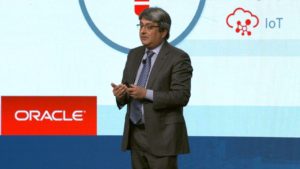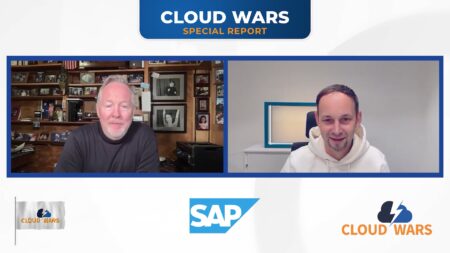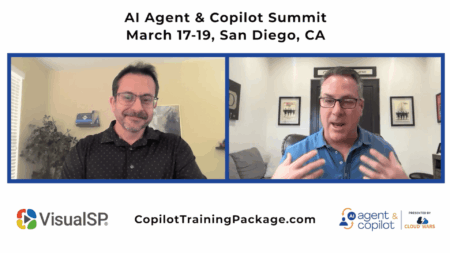It’s becoming a cold and hard truth: companies that can’t move at the speed of their customers and handle relentless change will simply not be able to compete in today’s digital marketplace.
And while they might not disappear overnight, the outcome will eventually be the same: first a downturn in revenue, then intense scrambling to identify deep-seated problems that are already out of hand, then increasing levels of irrelevance, and then the inevitable descent into the death spiral.
But for forward-looking and customer-centric companies with the courage and resolve to remake themselves around today’s realities and harness the pace of change as a competitive weapon, the opportunities are vast.
 Few tech-industry executives have seen more triumphs, struggles and innovations from business customers than Oracle executive vice president Steve Miranda, whose quarter-century tenure includes running product development for Oracle’s massive applications business for the past several years.
Few tech-industry executives have seen more triumphs, struggles and innovations from business customers than Oracle executive vice president Steve Miranda, whose quarter-century tenure includes running product development for Oracle’s massive applications business for the past several years.
Miranda has shared some of his thoughts about the pace of change and the emerging role of business applications in a blog post released this morning as Oracle kicks off its Modern Customer Experience event in Las Vegas. Here are a few excerpts from Miranda’s post along with some of my related thoughts.
“In my conversations with customers, they almost always talk about change. This change—in technology, in expectations, in their businesses, and in their teams—is not unusual, but as I am sure you have seen, its impact is growing,” writes Miranda. (Emphasis mine.)
My take
Yes indeed. No matter what industry a company’s in, no matter how big it is or how many employees it has or how many years it’s been on this or that stock exchange, if it can’t master the art of not just keeping up with change but using it as a competitive weapon, that company is in for a world of hurt. Customers have more alternative buying options than ever. They have less loyalty than ever. They have deeper knowledge than ever—and once a company gets on the customer’s “can’t keep up” list, it will be almost impossible to get back on it.
“That’s why we made a change ourselves. In the past, we held separate events for different business audiences. This year we wanted to create an applications community that reflects the way you work—with integrated systems across departments and business units, no matter the size, industry, or location of your organization… At these two co-located events, we are bringing together marketing, sales, and service with HR, finance, and supply chain, because we are seeing more and more similarities between each area.” (Emphasis mine.)
My take
Every company today is striving to create and deliver great customer experiences—but how can they achieve such results if they themselves are working in fragmented ways, with mismatched data models, different views of what’s real and what’s possible, different reward systems and motivations, and splintered priorities?
“You’re trying to stay ahead of changing expectations. Not just from customers, but from employees, partners, and a myriad of other stakeholders. And we all know the catch. Expectations are not only skyrocketing, but are constantly evolving. It’s a moving target.” (Emphasis mine.)
My take
There’s that relentless-change thing again. The big question: does your company see such change as an existential threat, or as an opportunity to outflank competitors and, more important, dazzle customers?
“Humans + Machines: Emerging technology is coming, but you’re not sure how or when. I see artificial intelligence and machine learning (AI/ML) reshaping workforces, improving decision making, accelerating processes, and driving efficiencies. Machines are freeing up business users to be more creative problem solvers, and this is changing the working relationship between people and technology.” (Emphasis mine.)
My take
In the hyper-accelerated world of today and especially tomorrow, AI and ML can be massive accelerators—but not if business leaders approach them timidly, fearfully or indecisively! If it’s true that speed kills, then business leaders have an existential decision to make: is their company going to be roadkill, or the one doing the thumping?
For a long time, Oracle was unmatched in its ability to talk at great length and in great depth about its technology, but it was not nearly so eloquent when trying to speak the language of the customer.
Miranda has always been an advocate for that customer-centric approach, so it’s great to see that reflected not only in how he’s framed out this blog post but also in how the company has reshaped its formerly disparate events to match the new shape of how digital business is done here in 2019.
Disclosure: at the time of this writing Oracle is a client of Evans Strategic Communications LLC.
Subscribe to the Cloud Wars Newsletter for twice-monthly in-depth analysis of the major cloud vendors from the perspective of business customers. It’s free, it’s exclusive, and it’s great!








